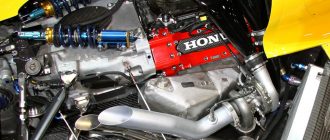What is a Flywheel in a Car Engine?
A flywheel is a heavy, rotating disk that is attached to the crankshaft of a car engine. It serves several important functions, including:
- Smoothing out the engine’s power output: The flywheel’s inertia helps to smooth out the pulsations in the engine’s power output, which can cause the car to jerk or vibrate.
- Storing energy: The flywheel stores energy when the engine is running, and releases it when the engine is not running. This helps to keep the engine running smoothly, even when the throttle is closed.
- Reducing torsional vibrations: The flywheel’s inertia helps to reduce torsional vibrations, which can cause the crankshaft to twist and bend.
How does a flywheel work?
A flywheel is typically made of cast iron or steel, and is mounted on the crankshaft of the engine. The flywheel is connected to the crankshaft by a series of bolts or studs. As the crankshaft rotates, the flywheel also rotates. The flywheel’s inertia causes it to resist changes in speed, which helps to smooth out the engine’s power output.
The flywheel also stores energy when the engine is running. When the engine is running, the flywheel is accelerated by the crankshaft. This energy is stored in the flywheel’s rotating mass. When the engine is not running, the flywheel releases this energy, which helps to keep the engine running smoothly.
What are the different types of flywheels?
There are two main types of flywheels: solid flywheels and dual-mass flywheels.
- Solid flywheels are made from a single piece of metal. They are less expensive than dual-mass flywheels, but they are also more likely to cause torsional vibrations.
- Dual-mass flywheels are made from two pieces of metal that are connected by a spring. The spring helps to absorb torsional vibrations, which makes dual-mass flywheels more suitable for high-performance engines.
What are the benefits of using a flywheel?
There are several benefits to using a flywheel in a car engine. These benefits include:
- Smoother engine operation: The flywheel’s inertia helps to smooth out the engine’s power output, which can reduce jerking and vibration.
- Improved fuel economy: The flywheel’s ability to store energy can help to improve fuel economy, by reducing the amount of fuel that is needed to keep the engine running.
- Reduced emissions: The flywheel’s ability to reduce torsional vibrations can help to reduce emissions, by reducing the amount of noise and vibration that is produced by the engine.
What are the drawbacks of using a flywheel?
There are also some drawbacks to using a flywheel in a car engine. These drawbacks include:
- Increased weight: Flywheels can be heavy, which can increase the weight of the car.
- Increased cost: Flywheels can be expensive, especially dual-mass flywheels.
- Increased maintenance: Flywheels can require more maintenance than other components of the car, such as regular inspections and lubrication.
Conclusion
The flywheel is an important component of a car engine. It plays a vital role in smoothing out the engine’s power output, storing energy, and reducing torsional vibrations. However, flywheels can also be heavy, expensive, and require more maintenance than other components of the car.




